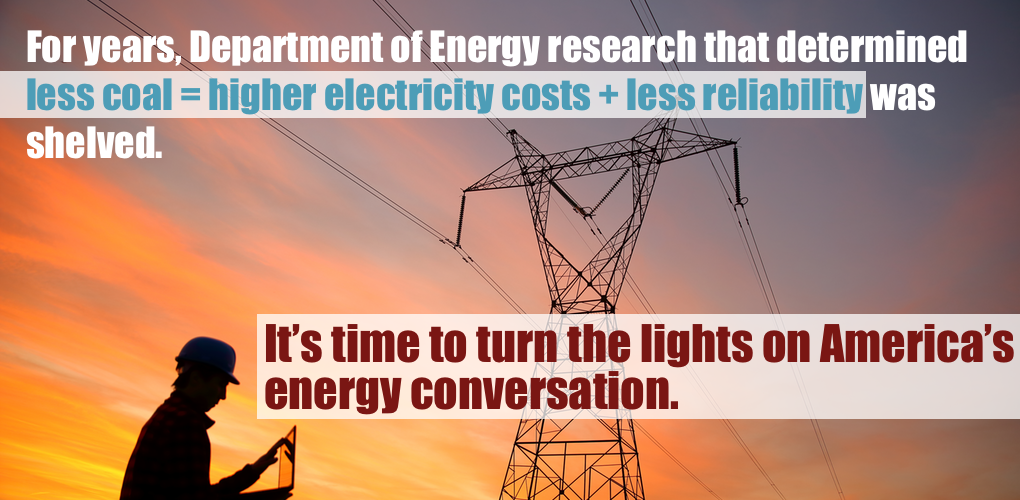
Science Dies in the Dark
November 30, 2017
During the last administration, serving in the Department of Energy’s Office of Fossil Energy was akin to tending bar during Prohibition. There was often demand for a stiff drink, but teetotalers made sure that “alcoholic beverages” weren’t on offer.
So it was with the fossil energy office at a time when coal was used to generate up to half the nation’s electricity but the president’s political minders were coal phobic. In those days, much good news about coal’s value to the economy and the potential of advanced coal technologies to reduce emissions was stifled from the top. Staff at the fossil energy office complained bitterly of political interference that blocked public release of favorable reports about coal from the National Energy Technology Labs (NETL) and other scientific sources.
Fresh evidence of this meddling came to light last week when the DOE released five NETL reports it received courtesy of “an anonymous source” that appear to have been deliberately suppressed. Three of the five were up on the DOE’s website briefly before they were abruptly pulled down in July 2015. The other two never saw the light of day.
And not because anyone quarreled with the factual findings; they were just the wrong findings. Or, put another way, the right findings but appearing at the wrong time.
One report, from February 2015, is especially relevant today. It examined the impact of announced plant retirements from the Mercury and Air Toxics (MATS) rule on the Eastern Interconnection. NETL estimated almost 42 GW would be gone by 2025, about 7 percent of the region’s total – of which more than 30 GW were coal units.
Contrasting two scenarios, NETL found that on-peak prices would increase under both a retirement and a non-retirement scenario. But here’s the relevant part: By 2025, prices under the “retirement” scenario would shoot up much faster, up to 81 percent over and above the “no-retirement” scenario. And the average on peak marginal price, based on a modest 1 percent increase in demand over the study period, would increase by 70 percent. MATS retirements would add $30 billion to meet projected demand over this period, a whopping 50 percent above the cost of the no-retirement scenario.
As prices climb, grid reliability would fall. NETL found that owing to transmission bottlenecks, retirements would make the regional grid less reliable. To avoid more serious risks, significant capacity additions to those already in queue would be needed as early as 2020. A total of 60 GW would be required by 2025 when reserve requirements are factored in. By contrast, the no-retirement scenario would need no additional capacity to ensure timely and reliable power supply.
“It would have been nice to know of these findings when [Secretary] Perry proposed his [cost recovery plan] to FERC,” said a DoE official.
Another NETL report, examining the impact of coal retirements on the PJM, found that additional generating capacity would be required as early as 2020 and that short-term pipeline congestion could be expected given the long timelines for permitting new transmission.
A third study summarized the “Benefits of NETL’s Clean Coal and Carbon Management Program.” It was never published. What a shock.
Clearly having research on the potential development of high-efficiency, low emissions coal technologies should have had a bearing on any rational consideration of energy needs in a highly uncertain world. How can policymakers expect to make responsible, rational decisions carrying far-reaching implications for the economy if they don’t weigh relevant facts? How can they earn public trust to do this when they don’t even try?
- On November 30, 2017
